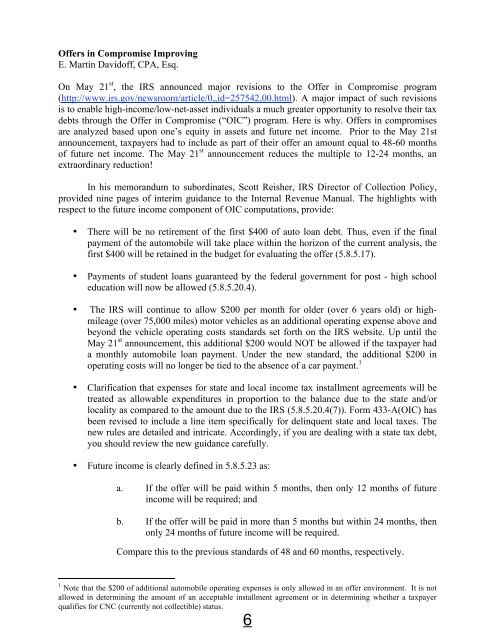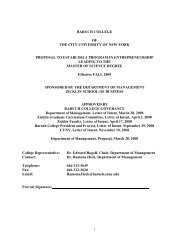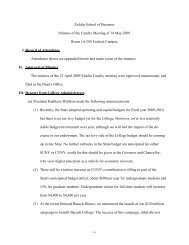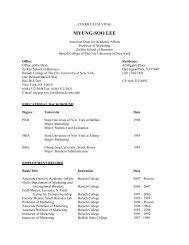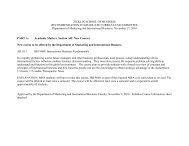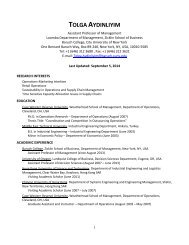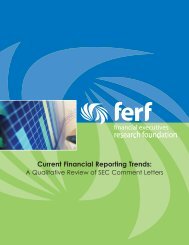Tax Seminar #3 – December 3 2012
Workbook - Zicklin School of Business
Workbook - Zicklin School of Business
You also want an ePaper? Increase the reach of your titles
YUMPU automatically turns print PDFs into web optimized ePapers that Google loves.
Offers in Compromise Improving<br />
E. Martin Davidoff, CPA, Esq.<br />
On May 21 st , the IRS announced major revisions to the Offer in Compromise program<br />
(http://www.irs.gov/newsroom/article/0,,id=257542,00.html). A major impact of such revisions<br />
is to enable high-income/low-net-asset individuals a much greater opportunity to resolve their tax<br />
debts through the Offer in Compromise (“OIC”) program. Here is why. Offers in compromises<br />
are analyzed based upon one’s equity in assets and future net income. Prior to the May 21st<br />
announcement, taxpayers had to include as part of their offer an amount equal to 48-60 months<br />
of future net income. The May 21 st announcement reduces the multiple to 12-24 months, an<br />
extraordinary reduction!<br />
In his memorandum to subordinates, Scott Reisher, IRS Director of Collection Policy,<br />
provided nine pages of interim guidance to the Internal Revenue Manual. The highlights with<br />
respect to the future income component of OIC computations, provide:<br />
• There will be no retirement of the first $400 of auto loan debt. Thus, even if the final<br />
payment of the automobile will take place within the horizon of the current analysis, the<br />
first $400 will be retained in the budget for evaluating the offer (5.8.5.17).<br />
• Payments of student loans guaranteed by the federal government for post - high school<br />
education will now be allowed (5.8.5.20.4).<br />
• The IRS will continue to allow $200 per month for older (over 6 years old) or highmileage<br />
(over 75,000 miles) motor vehicles as an additional operating expense above and<br />
beyond the vehicle operating costs standards set forth on the IRS website. Up until the<br />
May 21 st announcement, this additional $200 would NOT be allowed if the taxpayer had<br />
a monthly automobile loan payment. Under the new standard, the additional $200 in<br />
operating costs will no longer be tied to the absence of a car payment. 1<br />
• Clarification that expenses for state and local income tax installment agreements will be<br />
treated as allowable expenditures in proportion to the balance due to the state and/or<br />
locality as compared to the amount due to the IRS (5.8.5.20.4(7)). Form 433-A(OIC) has<br />
been revised to include a line item specifically for delinquent state and local taxes. The<br />
new rules are detailed and intricate. Accordingly, if you are dealing with a state tax debt,<br />
you should review the new guidance carefully.<br />
• Future income is clearly defined in 5.8.5.23 as:<br />
a. If the offer will be paid within 5 months, then only 12 months of future<br />
income will be required; and<br />
b. If the offer will be paid in more than 5 months but within 24 months, then<br />
only 24 months of future income will be required.<br />
Compare this to the previous standards of 48 and 60 months, respectively.<br />
1 Note that the $200 of additional automobile operating expenses is only allowed in an offer environment. It is not<br />
allowed in determining the amount of an acceptable installment agreement or in determining whether a taxpayer<br />
qualifies for CNC (currently not collectible) status.<br />
6


